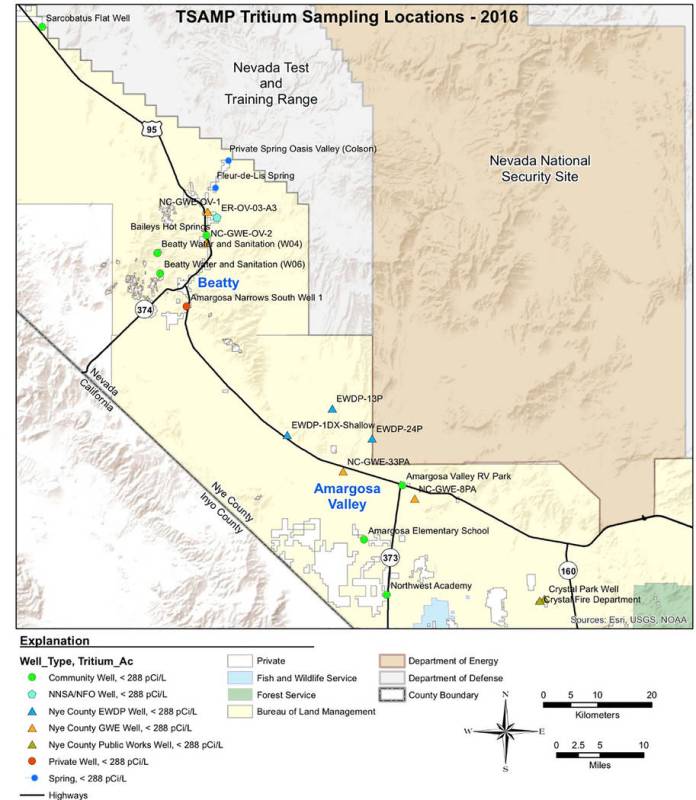
Nye County wells in the vicinity of the Nevada National Security Site have a level of tritium below the detection limit, according to recent lab results.
Officials tested 10 private wells, seven Nye County wells, two springs, and one Nevada National Security Site well located downgradient of the site. The areas of Lathrop Wells, Amargosa Valley and Beatty were sampled in 2016.
Samples were taken between Nov. 7 and Dec. 12. Five duplicate samples and two blank ones were also taken to meet quality assurance requirements.
John Klenke, Nye County geoscientist, said all of the sample results were below the lab’s detection limit of 288 picocuries per liter.
“This detection limit is far below the maximum contamination level for drinking water set by the EPA at 20,000 picocuries per liter,” Klenke said.
The data mirrors last year’s findings that showed 10 wells downgradient to the site had the detection limits of 278 or 313 picocuries per liter.
The ten “core wells” that were sampled in 2015 were resampled in 2016. They will be sampled every year for the duration of the grant. The other 10 locations that include eight wells and two springs are new for 2016, Klenke said.
Tritium is a soluble contaminant that moves with the groundwater at the rate of the groundwater flow. It has a 12.2-year life span. It is used as the tracer for other contaminants and is relatively easy to detect, officials said.
In August 2015, Nye County received a five-year $1.27 million grant from the Department of Energy (DOE) for a tritium groundwater monitoring program that covered the cost of the procedure. The grant will be disbursed in increments of $252,000 on a yearly basis.
This was year two of the DOE five-year grant and the program is now fully implemented with 20 locations to sample this year. Sample locations were determined with input from the Community Environmental Monitoring Program, trained local citizens who manage the monitoring program stations, at the meeting that was held in Tonopah on July 30, 2016.
The Community Environmental Monitoring Program is a network of monitoring stations located in communities surrounding and downwind of the Nevada National Security Site that monitors the airborne and groundwater environments for man-made radioactivity that could result from Nevada National Security Site activities, according to its website.
The program is a joint effort between the Department of Energy’s National Nuclear Security Administration Nevada field office and the Desert Research Institute of the Nevada system of higher education.
Under the grant, Nye County representatives will attend the underground test area pre-emptive review meetings in Las Vegas starting in March. These meetings will be the main venue for intergovernmental discussions about groundwater characterization strategies on the Nevada National Security Site.
Samples were analyzed by Radiation Safety Engineering, Inc. in Chandler, Arizona.
Contact reporter Daria Sokolova at dsokolova@pvtimes.com. On Twitter: @dariasokolova77